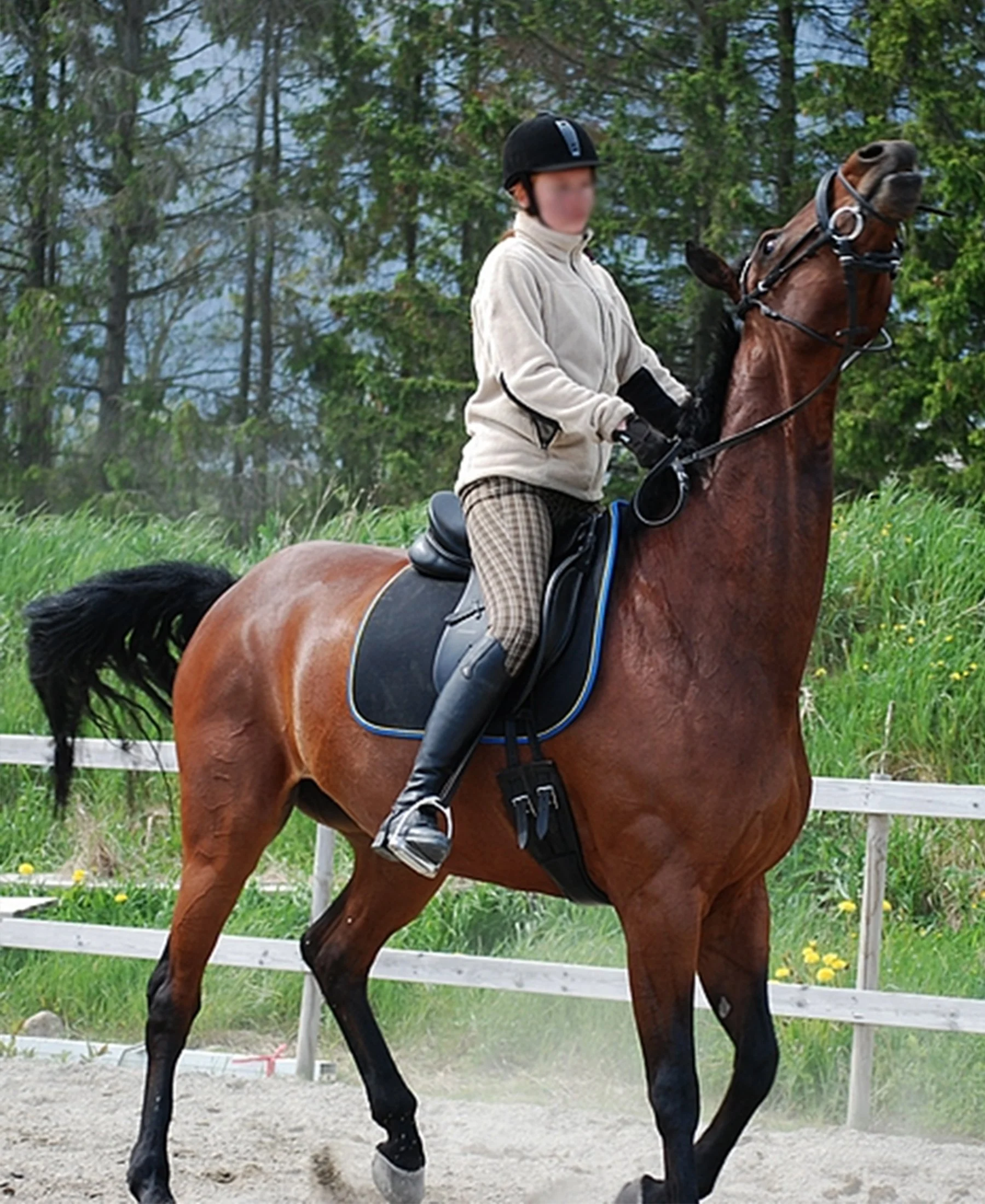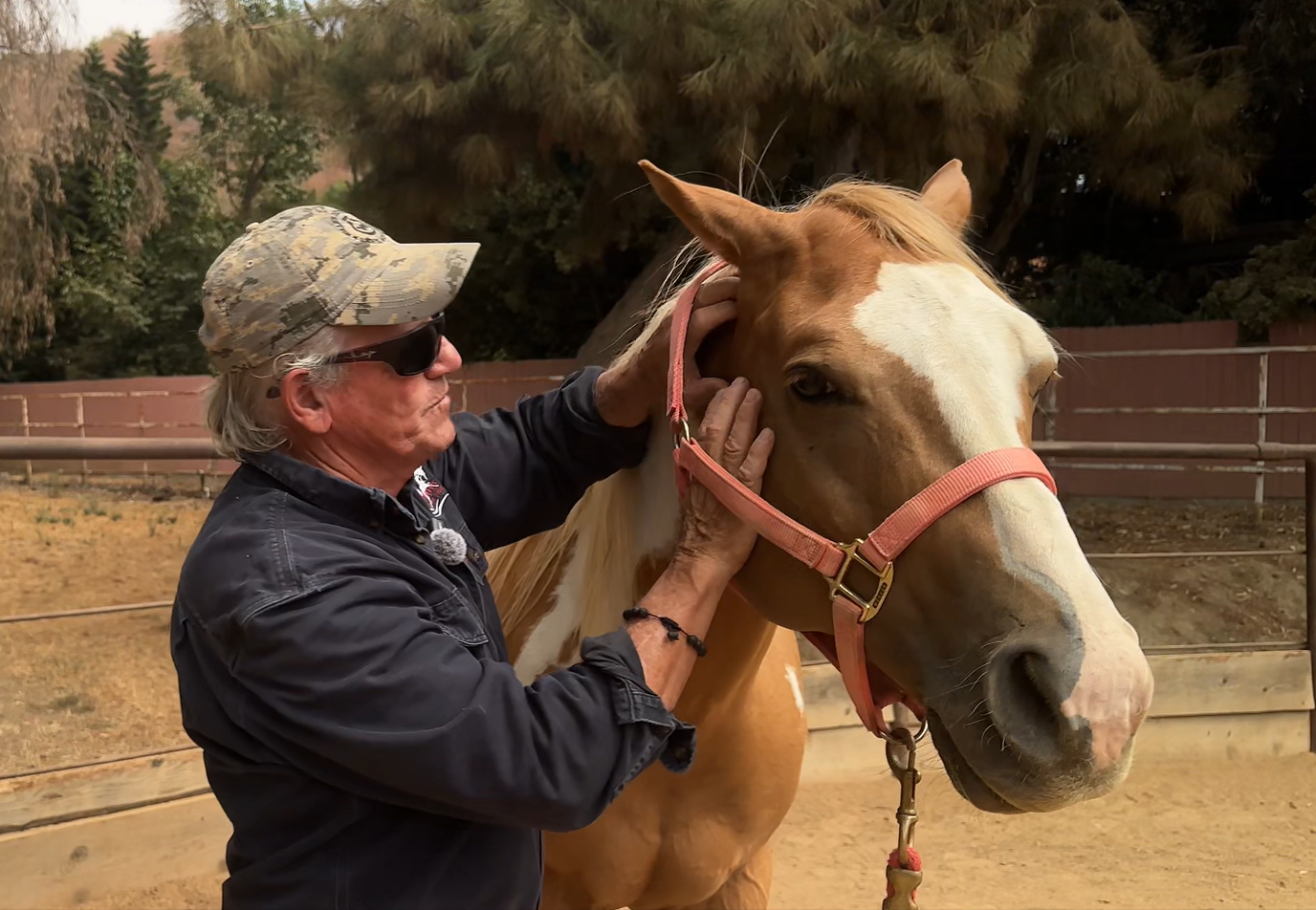Head Shaking Syndrome & Trigeminal Nerve
Head Shaking Syndrome is a worldwide phenomenon affecting horses across all breeds and disciplines. Nearly every horse has some degree of trigeminal neurology—the focal cause of this syndrome.
The signs are unmistakable: uncontrolled cranial shaking, usually up/down or ventral/dorsal in nature. Head shaking symptoms can and do occur during any activity, under bridle or at rest. At its core, this condition stems from trigeminal nerve irritation. The good news? It’s treatable. I’ve worked with countless horses with this, and with the right approach, they find lasting relief.
The trigeminal nerve exits between the occiput and atlas. Any compression at the OA junction can create chronic downstream spasms that trigger head shaking symptoms. If this nerve is compromised, the horse will experience severe discomfort and unpredictable neurological reactions.
How To Assess and Treat Trigeminal Dysfunction
I find great resolve with the majority of head shakers. Trigeminal treatment is straightforward, but it is a very painful, reactive nerve to mobilize. Normally, I focus on allowing the body to unwind in a position of ease, but there are times—like with the trigeminal nerve—where if you don’t go in deeply, intensely deep, it’s abusive, and you shouldn’t attempt it.
This is one of the most painful nerves in the body—humans suffering from this condition are often given strong narcotics just to manage it. There is an intense crescendo of pain at the end of each segment, demanding the full attention of both therapist and horse.
A critical step is to first release the OA junction, ensuring the nerve has space to function properly. Ideally you do some work on the OA to get the exit open so that you have the gas coming down. After that, I palpate along the nerve’s three major branches—mandibular, maxillary, and ophthalmic—following their path and feeling for restrictions.
This short video focuses on the maxillary branch of the nerve. Of importance to Craniosacral Therapists, this branch passes over the sphenoid wing and will dominate its motility, thus one should osteopathically release this nerve BEFORE cranial vault mobilization.
Equine Trigeminal Nerve Release Video Short
Trigeminal Nerve Release
All nerves have an inherent cranial-caudal movement, an ebb and flow much like cranial rhythm. They all do, this is their dance everywhere. With the trigeminal nerve, I follow this motion and apply just the right amount of pressure, tuning into the nerve’s frequency.
Unlike other bodywork where the horse may shift or release tension gradually, trigeminal work is immediate and powerful. So I wait for trigeminal and I ask it to come into my fingertips. As I ride the nerve’s motion, I wait for a block, then stay right with it—never forcing, just following. Then I go into the block. Once I am at the block, I stay in and away, adding “gas” to initiate the release. When the nerve is ready, the release is dramatic.
Here’s what’s incredible—after an extreme release, I have always seen a horse come right back, graciously asking for more. They recognize the relief and stay engaged in the process, often leaning into it, despite the pain. This kind of response tells you everything—you’re in the right place, doing the right work.
This is much like the great Māori Healers of New Zealand, and my good friend Dr. Herb Akers (Quantum Connective Healing), who employ deep work that exceeds the neural hold and thus let go.
Why Do Some Cases Keep Coming Back?
Most cases of head shaking resolve when the compression at the OA junction is released. However, some horses will relapse due to ongoing inflammation in the nerve.
Those cases that are recurring are always due to unresolved trigeminal nerve inflammation—usually allergenic, heavy metals, or vector/infection based.
Most head shaking is mechanically caused due to OA cranial base compression of the trigeminal nerve, which exits laterally between the occiput and the atlas. Therefore, any severe inflammation and compression of the nerve pathway will create chronic spasms downstream or efferent nerve pathway. Craniosacral therapy will alleviate most if not all trigeminal spasms, and osteopathic-focused techniques on the nerve will result in a thorough resolve.
Until these underlying causes are addressed, the nerve remains susceptible to irritation, and symptoms may return.
The trigeminal nerve is powerful, reactive, and, when cleared, transformative. Horses don’t shy away from this work—they lean into it. When done right, it’s one of the most profound releases you’ll ever see.



